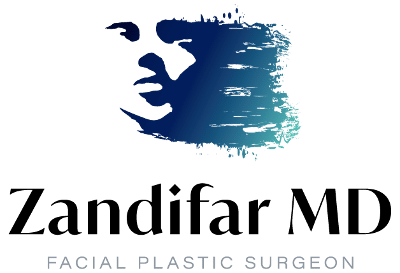Facial aging is a natural process that everyone undergoes. While lifestyle factors such as sun exposure, diet, and skincare play significant roles, genetics is a powerful determinant in how our faces change over time. Understanding the role of genetics in facial aging can offer valuable insights for those considering plastic surgery solutions to combat the visible signs of aging. This blog will delve into the genetic factors that influence facial aging and the plastic surgery solutions that can help restore a youthful appearance.
Understanding the Genetics of Facial Aging
Genetics determines much of how we age. It influences various aspects, including skin elasticity, bone density, and fat distribution, all of which contribute to the appearance of aging. By studying the genes associated with facial aging, we can better understand the personalized approach necessary for each individual considering cosmetic enhancements.
Skin Elasticity and Collagen Production
One of the primary genetic factors in aging is the body’s ability to produce collagen. Collagen is a protein that provides structure to the skin, helping it stay firm and supple. Genetic variations affect collagen production and the rate at which it breaks down, impacting skin elasticity and leading to sagging and wrinkle formation as we age.
Bone Density and Facial Structure
Our bone structure changes as we age, with bones becoming thinner and losing volume over time. Genetics plays a crucial role in determining the rate of bone density loss, which can influence how quickly our facial structure changes. Individuals with a genetic predisposition to faster bone density loss may experience more pronounced sagging and hollowness, particularly in the cheeks and around the eyes.
Fat Distribution and Volume Loss
Another genetic factor influencing facial aging is fat distribution. As we age, we lose facial fat, which can lead to a hollowed and gaunt appearance. Genetics determines where fat is distributed and how quickly it is lost, leading to the distinctive aging patterns observed in different individuals. This loss of volume often contributes to the appearance of sunken cheeks and deep facial lines.
The Impact of Genetics on Different Aging Patterns
Facial aging is not a one-size-fits-all process. People age differently based on their genetic makeup, which often determines the areas of the face most susceptible to aging. By understanding these genetic influences, individuals can make more informed decisions about which cosmetic procedures are best suited to address their specific concerns.
Wrinkle Formation
Genetics largely dictates where wrinkles first appear and how deep they become over time. Some individuals may develop fine lines around their eyes early on, while others may notice deeper folds around their mouths. By identifying genetic tendencies for wrinkle formation, cosmetic professionals can recommend treatments that target specific areas to help clients maintain a smoother complexion.
Skin Texture and Tone
Uneven skin texture, pigmentation issues, and loss of skin tone are also influenced by genetics. Certain genetic profiles are more prone to developing age spots, while others may experience uneven skin tone. Plastic surgery solutions, combined with targeted skincare regimens, can address these genetic predispositions to help maintain a more youthful, even-toned complexion.
Drooping and Sagging
Genetics often determine how quickly the skin loses elasticity, which can lead to drooping and sagging, particularly around the jawline and neck. Some individuals may notice early sagging due to their genetic makeup, while others maintain a firmer appearance for longer. For those concerned with drooping and sagging, plastic surgery options like facelifts or neck lifts can provide significant improvements.
Plastic Surgery Solutions for Genetically Influenced Aging
The beauty of modern plastic surgery is that it offers a range of solutions tailored to individual needs. Whether genetics has impacted your skin texture, volume loss, or facial structure, there are options available to help you achieve a more youthful appearance.
Facelifts and Mini-Facelifts
Facelifts are highly effective for individuals with genetically influenced sagging and wrinkles. This procedure can tighten the skin, reduce wrinkles, and enhance facial contours, providing a rejuvenated appearance. Mini-facelifts are a less invasive option for those with mild to moderate signs of aging who want a more subtle enhancement.
Dermal Fillers and Fat Grafting
For individuals experiencing volume loss, dermal fillers and fat grafting can restore youthful fullness to the face. Dermal fillers are injectable treatments that plump up areas like the cheeks and lips, while fat grafting uses fat from other areas of the body to fill in hollowed areas. Both options are excellent for addressing genetic factors that cause gauntness and loss of facial volume.
Eyelid Surgery (Blepharoplasty)
Genetically determined bone structure and fat distribution around the eyes can lead to puffiness or drooping eyelids. Blepharoplasty, or eyelid surgery, can correct these issues by removing excess skin and fat, resulting in a more refreshed and youthful eye area. This procedure is particularly beneficial for individuals with a genetic predisposition to early signs of aging around the eyes.
Laser Skin Resurfacing
For those with genetically influenced skin texture and pigmentation concerns, laser skin resurfacing can improve the skin’s appearance by addressing uneven texture, sun spots, and fine lines. This procedure promotes collagen production, helping to tighten the skin and enhance overall texture and tone.
Conclusion:
While genetics plays a significant role in how we age, plastic surgery offers effective solutions for those looking to enhance their appearance and counteract the effects of aging. At Zandifar MD, we understand that each individual’s aging process is unique, and we offer a variety of treatments tailored to address genetically influenced aging patterns. Our approach is personalized, focusing on achieving natural-looking results that enhance your unique features.
If you’re ready to explore the ways plastic surgery can help you combat the signs of aging, schedule a consultation with Zandifar MD today. Our team of experts is dedicated to helping you achieve your aesthetic goals through customized treatment plans designed to address your specific needs. Contact us now to start your journey toward a more youthful, revitalized appearance.

